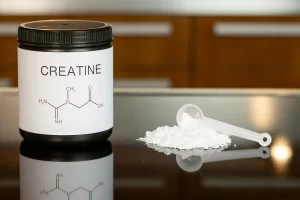Around 1 am on June 7, 2014, actor and comedian Tracy Morgan suffered severe injuries to his body and head when a speeding Walmart truck crushed his limousine on the New Jersey Turnpike, killing Morgan’s friend — a fellow comedian — and critically injuring two other passengers.
Tracy was left with chronic pain, memory problems, and psychological trauma that ravaged him for years. He speaks of continued nightmares and is only now slowly recovering from the incident.
Tracy is among hundreds of thousands who experience traumatic brain injury (TBI) every year and must live with the consequences.
As we near the end of Brain Injury Awareness Month, it is important to remember that TBI is an injury to the brain caused by an external force, such as a blow to the head, a fall, or a motor vehicle accident. A penetrating injury, such as a gunshot wound, can also cause it.
TBI can cause physical, cognitive, and emotional symptoms lasting for months or even years. It can profoundly affect the lives of those affected, including physical, mental, and emotional challenges. It can also significantly impact families, caregivers, and communities. So, let’s take a closer look at TBI’s science and human impact and explore the resources available to those affected.

The neuroscience of traumatic brain injuries
Traumatic brain injuries are a leading cause of death and disability in the United States. According to the Centers for Disease Control and Prevention (CDC), a TBI is caused by a bump, blow, or jolt to the head or a penetrating head injury that disrupts the brain’s normal function.
These injuries can also be defined as closed (nonpenetrating) or open (penetrating). The CDC reports that 75% of TBIs are mild traumatic brain injuries (mTBIs) or concussions. The Department of Defense identifies TBI as the signature injury of Operation Enduring Freedom and Operation Iraqi Freedom veterans. Blast injuries are a common mechanism of injury associated with this war period.
TBIs are a serious public health issue. The CDC say there are approximately 2.87 million TBI-related emergency department visits, hospitalizations, and deaths in the United States annually. Of those, 52,000 die, 275,000 are hospitalized, and 1.4 million are treated and released from an emergency department.
Traumatic brain injuries are a leading cause of death and disability in the United States. TBIs can range from mild (concussions) to severe (penetrating injuries), and the symptoms and recovery time vary depending on the extent of the injury. Unfortunately, many TBIs are avoidable. The Brain Injury Association of America reports that 90% of sports-related TBIs can be prevented using proper equipment and following safety guidelines. Additionally, wearing a seatbelt can prevent 50% of TBIs that occur in traffic accidents.
Current literature suggests TBIs makes up 10% to 15% of all sports-related injuries. Collision sports (American football followed by women’s soccer) report the highest incidence of TBI.
TBI is a leading cause of long-term disability among children and young adults in the United States.
More than 1.1% of the US population is living with a TBI. Of that population, more than 40% of patients with moderate to severe injuries will have long-term disabilities. Cost estimates are varied, ranging from $56 to $221 billion annually. The variation reflects difficulty measuring hidden costs associated with long-term disability, such as lost wages and caregiver expenses.
Mild, moderate, and severe traumatic brain injuries
TBI can be classified into three main categories: mild, moderate, and severe. Mild TBI, also known as a concussion, is the most common type of TBI and is characterized by a brief change in mental status or consciousness. Symptoms may include headache, confusion, lightheadedness, dizziness, blurred vision, ringing in the ears, fatigue, and sleep disturbances.
Moderate TBI is more serious than mild TBI and is characterized by a loss of consciousness for more than 30 minutes and/or a period of amnesia lasting more than 24 hours. Symptoms may include headache, confusion, dizziness, nausea, vomiting, slurred speech, drowsiness, and difficulty concentrating.
Severe TBI is the most serious type of TBI and is characterized by a loss of consciousness for more than 24 hours and/or a period of amnesia lasting more than seven days. Symptoms may include headache, confusion, dizziness, nausea, vomiting, slurred speech, drowsiness, and difficulty concentrating. Chemically, TBI can be classified as primary or secondary.
The symptoms of traumatic brain injuries
Traumatic injuries disrupt normal cellular function within the brain through direct, rotational, and shear forces. These injuries may manifest in different degrees and severities. The most common type of damage in nonpenetrating injuries is diffuse axonal injury, which damages the connections between neurons. Diffusion tensor imaging is a unique MRI technique that can give us insight into this injury.
Some complications after a TBI include seizures, neuroendocrine disorders through mechanical damage to the pituitary, posttraumatic hydrocephalus (increased pressure in the brain), posttraumatic agitation and behavioral changes, and neuropsychiatric disorders such as depression, anxiety, and psychosis.
Treating traumatic brain injuries
The treatment type for TBI depends on the injury’s severity. For mild TBI, medical treatment may include reducing inflammation, pain management, and on some occasions, seizure management.
For severe cases, there may be a need for surgical interventions such as intubation, removal of blood clots, repair of skull fractures, relief of pressure in the brain, as well as rehabilitation and physical and occupational therapy. Most of those suffering from severe TBI will need psychosocial interventions involving counseling and support groups.
There is robust evidence to suggest that lifestyle interventions can effectively treat TBI. A systematic review of randomized controlled trials, a meta-analysis, and a review of observational studies have found that lifestyle interventions, such as physical activity, cognitive rehabilitation, and psychosocial interventions, can improve mental, physical, and psychosocial outcomes in individuals with TBI.
Traumatic brain injuries are a serious and costly public health issue in the United States. While falls are the leading cause of TBI, many accidents are avoidable by taking proper safety precautions. It is essential to raise awareness about TBIs’ impact and take steps to prevent these injuries from occurring.
Resources
Brain Injury Association of America (BIAA)
Website: https://www.biausa.org/
Phone: 800-444-6443
Brain Injury Services
Website: https://www.braininjuryservices.org/
Phone: 703-451-8881
Brain Injury Network
Website: https://www.braininjurynetwork.org/
Phone: 888-818-1288
Brain Injury Society
Website: https://www.bisa.org/
Phone: 800-444-6443
Sources
1. van Heugten, C. M., van de Sande, R., de Koning, M. E., & van Zandvoort, M. J. (2012). Lifestyle interventions for people with traumatic brain injury: A systematic review. Neuropsychological Rehabilitation, 22(3), 333-355. doi: 10.1080/09602011.2011.636809
2. Lai, J. C., Chang, W. H., & Hsieh, C. L. (2016). The efficacy of lifestyle interventions in traumatic brain injury: A meta-analysis. NeuroRehabilitation, 38(2), 145-155. doi: 10.3233/NRE-161358
3. Griesbach, G. S., Hovda, D. A., & Ploughman, M. (2008). Exercise and cognitive rehabilitation after traumatic brain injury. NeuroRehabilitation, 23(4), 315-326. doi: 10.3233/NRE-2008-23402
4. Stolwyk, R. J., & Anderson, V. A. (2015). Qualitative research exploring the impact of lifestyle interventions on quality of life for people with traumatic brain injury: A systematic review. Neuropsychological Rehabilitation, 25(2), 181-202. doi: 10.1080/09602011.2014.939193



